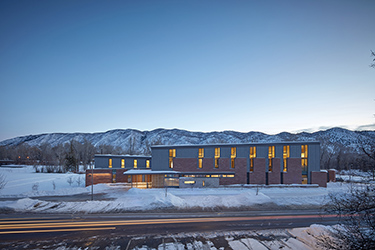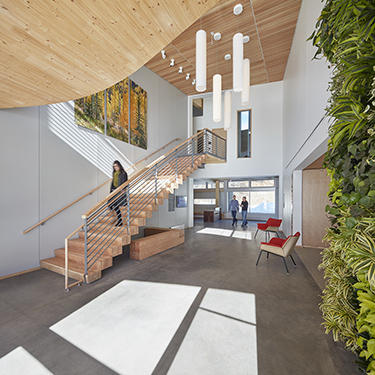|
Subscribe / Renew |
|
|
Contact Us |
|
| ► Subscribe to our Free Weekly Newsletter | |
| home | Welcome, sign in or click here to subscribe. | login |
Environment
| |
August 8, 2017
Very green building in very cold place: ZGF wins Petal for project in Colorado
Rocky Mountain Institute's Innovation Center in Basalt, Colorado, earned the Living Building Challenge's Petal certification.
In a press release, ZGF Architects said it designed the 15,600-square-foot LEED platinum and Passive House-certified office building to be the most energy-efficient building in North America's coldest climate zone.
The team also included Graybeal Architects, JE Dunn Construction, PAE Consulting Engineers, KPFF Consulting Engineers, Architectural Applications, DHM Design, DNA Lighting, Sopris Engineering and Green Hammer.
Rocky Mountain Institute is a nonprofit that works with businesses, communities, institutions and entrepreneurs to find market-based solutions for shifting from fossil fuels to renewables and energy efficiency. It has about 170 staff and annual operations of $35 million, according to its website.
RMI project manager Cara Carmichael said the Innovation Center is a model for net-zero energy buildings.
The Living Building Challenge is a green building certification program and sustainable design framework. It is organized into seven “petals” — or performance areas — that each have detailed requirements addressing specific issues. Third-party auditors analyze projects for 12 consecutive months.
The Living Building Challenge awarded the Innovation Center four petals based on these factors:
• Site: The building is on a previously developed site, near wetlands along the Roaring Fork River. Wetland buffers and the landscape were designed to restore native habitat.
• Energy: The designers considered air temperature, wind speed, humidity, clothing, activity levels and the radiant temperature of surrounding surfaces to passively cut energy use in half and eliminate the need for central air conditioning. The building operates beyond-net-zero energy. Its excess energy powers three on-site electric car stations and is sold to the local electric grid.
• Equity: The project has outdoor seating and gathering spaces, workspaces overlooking the landscape, limited on-site parking, and technologies that focus on keeping people comfortable inside. The center and landscape are ADA accessible so the public can explore the river and parklands.
• Beauty: The center takes inspiration from its Aspen Valley surroundings, with rough-hewn Colorado- and buff-sandstone walls, juniper wood accents, and zinc shingles and white metal panels reflecting the snowcapped mountains.




